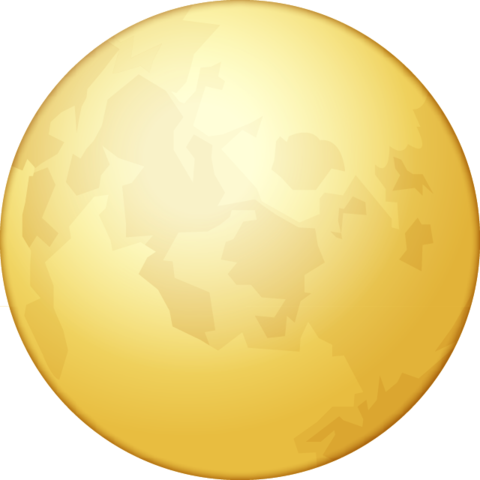No explanation from White House why tiny Aussie island's tariffs are nearly triple the rest of Australia's
-
Yet none to Russia, curious?
Trump’s mouth is Putin’s cock-holster. It’s not really all that curious.
-
Summary
The U.S. imposed a 29% tariff on Norfolk Island, nearly triple the 10% rate applied to the rest of Australia, with no explanation from the White House.
Australian Prime Minister Anthony Albanese expressed confusion, noting Norfolk Island’s limited economic activity. The territory has a population of about 2,000 and minimal exports.
Other remote territories like Christmas Island and Heard and McDonald Islands also received tariffs, though the latter are uninhabited.
My personal guess (just a guess, since none of this makes any logical sense) is that he's going to use the very high tariffs on those islands to help him with some creative accounting in showing overall wins when all of this is over. Increasing the pittance that these islands are likely paying us already, let's call it turning $100 into $150 - no meaningful benefit to the US, but looks amazing by the percentages.
"See, I tariff'd the whole world for a 5.5 gajillion percent increase in US revenue! I'm a big winner!"
-
Summary
The U.S. imposed a 29% tariff on Norfolk Island, nearly triple the 10% rate applied to the rest of Australia, with no explanation from the White House.
Australian Prime Minister Anthony Albanese expressed confusion, noting Norfolk Island’s limited economic activity. The territory has a population of about 2,000 and minimal exports.
Other remote territories like Christmas Island and Heard and McDonald Islands also received tariffs, though the latter are uninhabited.
Stupid is as stupid does.
-
My personal guess (just a guess, since none of this makes any logical sense) is that he's going to use the very high tariffs on those islands to help him with some creative accounting in showing overall wins when all of this is over. Increasing the pittance that these islands are likely paying us already, let's call it turning $100 into $150 - no meaningful benefit to the US, but looks amazing by the percentages.
"See, I tariff'd the whole world for a 5.5 gajillion percent increase in US revenue! I'm a big winner!"
I think your general point may be correct, but remember that tariffed countries don't pay anything, it is the US importers that pay and pass that along to US consumers.
-
Maybe I’m stupid but I can’t find an example of this.
I’ve seen him being critical. I’ve seen him asking the president to have empathy.
I seen one bit back when he was first elected where he said to give him a chance. At that point nobody really knew what he was going to do. We were all hoping he was just being a showman to get elected.
I’m not picking a fight, I’m just genuinely asking for some evidence that he supports Trump because I can’t find it.
He doesn't from what I've seen (at least not openly.)
Definitely said some bigoted anti-trans shit tho.
-
Summary
The U.S. imposed a 29% tariff on Norfolk Island, nearly triple the 10% rate applied to the rest of Australia, with no explanation from the White House.
Australian Prime Minister Anthony Albanese expressed confusion, noting Norfolk Island’s limited economic activity. The territory has a population of about 2,000 and minimal exports.
Other remote territories like Christmas Island and Heard and McDonald Islands also received tariffs, though the latter are uninhabited.
I'd be willing to bed these percentages are based on the responses to WH communications (of threats), and those who did not respond at all have received the harshest penalty category.
Of course, an island with zero inhabitants is not likely to have responded.
-
Summary
The U.S. imposed a 29% tariff on Norfolk Island, nearly triple the 10% rate applied to the rest of Australia, with no explanation from the White House.
Australian Prime Minister Anthony Albanese expressed confusion, noting Norfolk Island’s limited economic activity. The territory has a population of about 2,000 and minimal exports.
Other remote territories like Christmas Island and Heard and McDonald Islands also received tariffs, though the latter are uninhabited.
It's obvious that he thinks the McDonald Island is where the fastfood chain gets their food. Since McDonald's is America's favorite and only source of food according to trump (probably) and since tariffs pay America, he's thinking he's going to make us rich. Everyone eats McDonald's which obviously comes from the McDonald Island. They pay the tariffs and Americans get rich. Art of the deal.
-
Summary
The U.S. imposed a 29% tariff on Norfolk Island, nearly triple the 10% rate applied to the rest of Australia, with no explanation from the White House.
Australian Prime Minister Anthony Albanese expressed confusion, noting Norfolk Island’s limited economic activity. The territory has a population of about 2,000 and minimal exports.
Other remote territories like Christmas Island and Heard and McDonald Islands also received tariffs, though the latter are uninhabited.
They threw a dart at a globe and that’s where it landed.
-
Summary
The U.S. imposed a 29% tariff on Norfolk Island, nearly triple the 10% rate applied to the rest of Australia, with no explanation from the White House.
Australian Prime Minister Anthony Albanese expressed confusion, noting Norfolk Island’s limited economic activity. The territory has a population of about 2,000 and minimal exports.
Other remote territories like Christmas Island and Heard and McDonald Islands also received tariffs, though the latter are uninhabited.
-
Summary
The U.S. imposed a 29% tariff on Norfolk Island, nearly triple the 10% rate applied to the rest of Australia, with no explanation from the White House.
Australian Prime Minister Anthony Albanese expressed confusion, noting Norfolk Island’s limited economic activity. The territory has a population of about 2,000 and minimal exports.
Other remote territories like Christmas Island and Heard and McDonald Islands also received tariffs, though the latter are uninhabited.
Make them broke and offer to buy the land from under them
-
Summary
The U.S. imposed a 29% tariff on Norfolk Island, nearly triple the 10% rate applied to the rest of Australia, with no explanation from the White House.
Australian Prime Minister Anthony Albanese expressed confusion, noting Norfolk Island’s limited economic activity. The territory has a population of about 2,000 and minimal exports.
Other remote territories like Christmas Island and Heard and McDonald Islands also received tariffs, though the latter are uninhabited.
I’m pretty sure that the trump regime spun two gameshow wheels: one to pick a country and another to pick a tariff percentage.
-
I think your general point may be correct, but remember that tariffed countries don't pay anything, it is the US importers that pay and pass that along to US consumers.
Tariffs are really meant to increase demand for domestic production, but that can only really happen if the production exists domestically to begin with.
-
Summary
The U.S. imposed a 29% tariff on Norfolk Island, nearly triple the 10% rate applied to the rest of Australia, with no explanation from the White House.
Australian Prime Minister Anthony Albanese expressed confusion, noting Norfolk Island’s limited economic activity. The territory has a population of about 2,000 and minimal exports.
Other remote territories like Christmas Island and Heard and McDonald Islands also received tariffs, though the latter are uninhabited.
Easy.
Someone from that island hurt Trump's feefees 3 decades ago.
-
Tariffs are really meant to increase demand for domestic production, but that can only really happen if the production exists domestically to begin with.
That is one reason to do tariffs. However, as someone who's consulted in a variety of industries, it's stupid to do non-targeted tariffs like this. There's no way this is going to rebuild industry on shore in the US, exactly as you say. That takes years or decades to even build up an infrastructure and a supply chain, not to mention that, at least recently, we've had low unemployment rates and no one to work the jobs anyway.
The CHIPS act was a better way to do it. If you believe you need to re-onshore an industry, then give multiple years' warning before implementing tariffs and provide support for redeploying domestic production capacity. However, for some strange reason, the Republicans don't like that act.
-
I’m pretty sure that the trump regime spun two gameshow wheels: one to pick a country and another to pick a tariff percentage.
I read that they just looked at popular top level domains in some AI and generated the tarrifs from them.
All crazy places so far seem to have their own tld, so I fully support that theory
-
That is one reason to do tariffs. However, as someone who's consulted in a variety of industries, it's stupid to do non-targeted tariffs like this. There's no way this is going to rebuild industry on shore in the US, exactly as you say. That takes years or decades to even build up an infrastructure and a supply chain, not to mention that, at least recently, we've had low unemployment rates and no one to work the jobs anyway.
The CHIPS act was a better way to do it. If you believe you need to re-onshore an industry, then give multiple years' warning before implementing tariffs and provide support for redeploying domestic production capacity. However, for some strange reason, the Republicans don't like that act.
The US is likely never going to be a manufacturing powerhouse again.
Americans love the idea of buying American made products, but not the cost and certainly not the labor that actually goes into making them at scale.
Certainly some things need to be produced domestically, and still are, either because it’s expensive or impractical to ship them, or because it’s a national security concern. But the vast majority of products your typical American buys will never be made here, because they would instantly become luxury items.
-
System shared this topic on



